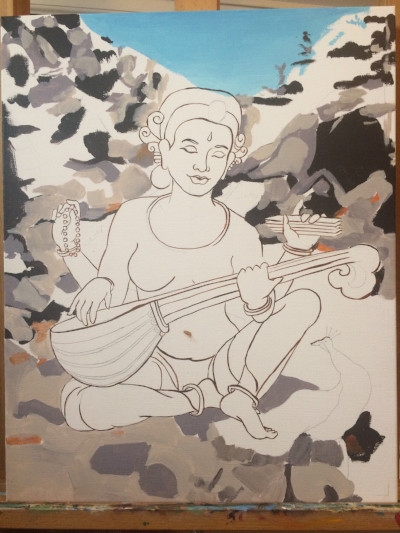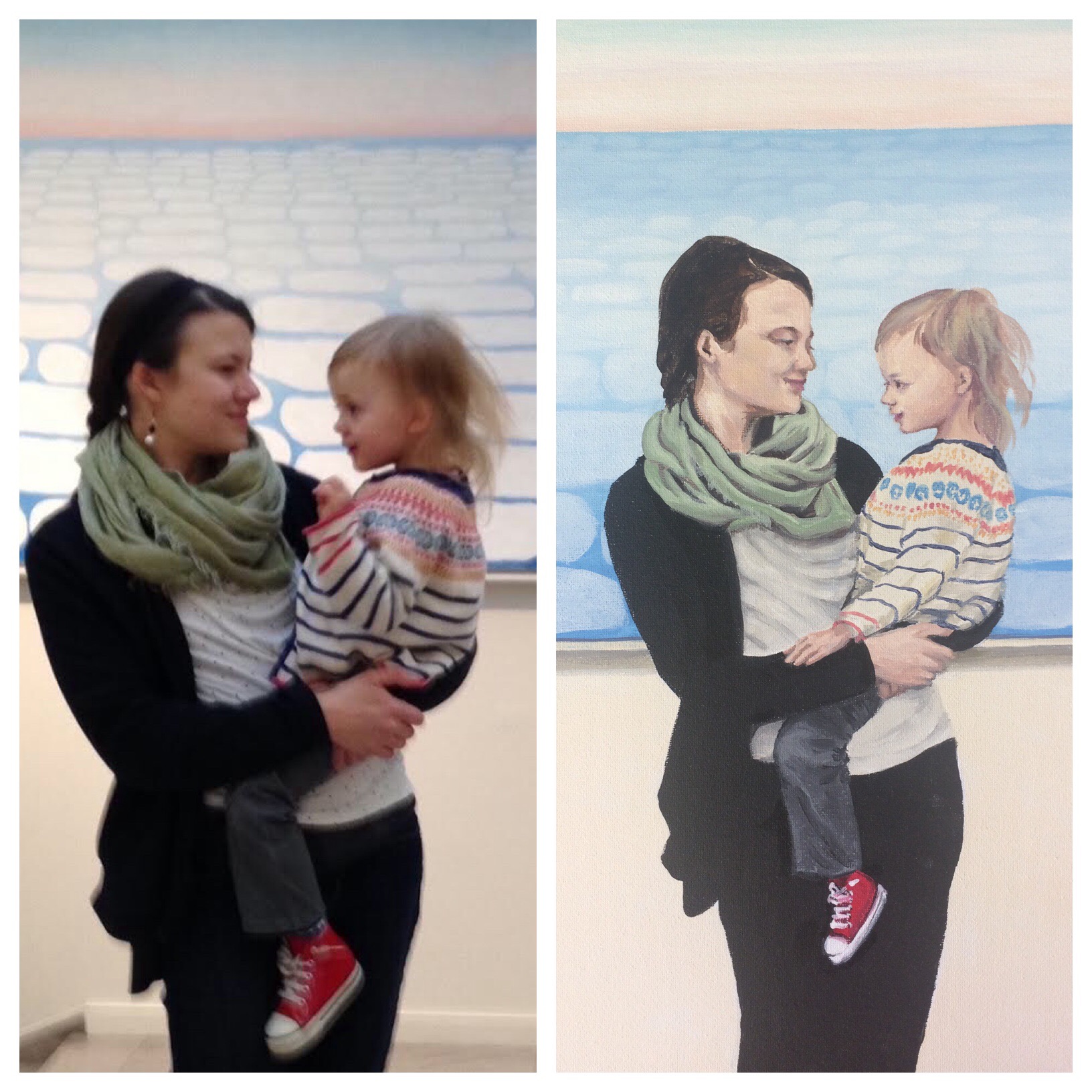The image of Ganesh holding his tusk will always stir my soul. He broke it off during a non-stop writing project, to keep his commitment to write even when his pen broke. Ganesh and the sage Vyasa had a deal - as long as Vyas told his story, Ganesh would transcribe. This story is told in the Mahabharata, an ancient Indian epic.
This was one of the first paintings I made while living at Shoshoni Yoga Ashram. It was incredible how many creative blocks - self-doubt, criticism, fear - showed up during the process! As the lord of obstacles, Ganesh embodies the energy of moving around and through blocks. A key thing here is MOVING - keep momentum in any form. In this and many of my paintings, there is flowing water in the background to indicate creative flow.
I heard recently that when Einstein had a block in his scientific work, he would stop and play the violin. This strategy allowed him to create a flow in another outlet and then infuse it into his work.
As a meditator, I find that blocks in my work are related to a block in myself. I am so lucky for my meditation training at Shoshoni that I know how to look within, take a conscious breath, and release the tensions in me that block my flow.
How do you flow through your creative blocks?



























